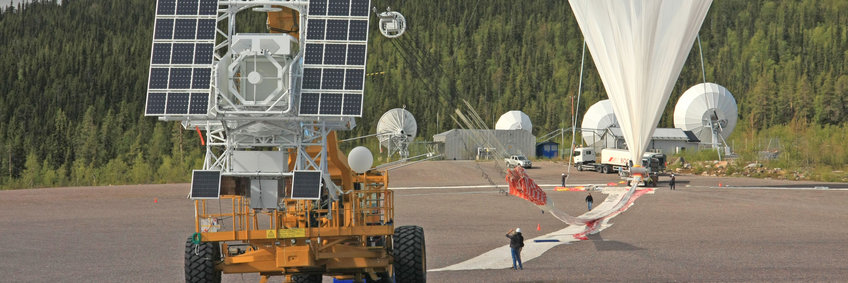
Plenty of buzz on the Sun
Scientists are on the trail of the Sun’s mysteries using a flying observatory with a 130-metre helium-filled balloon, which was made possible by funding from private endowments.
No Sun, no life – no photosynthesis, no oxygen production, no evaporation and no rain. As well as no change between light and dark, no change in the seasons either. It is no wonder that humankind has always worshipped the Sun and been fascinated by it. The scientists at the Max Planck Institute for Solar System Research also direct their full attention towards the solar system to find answers to many unanswered questions of solar physics. They attempt to describe the events in the solar system with theoretical models and to simulate them on the computer. They develop and construct scientific instruments to investigate the planets and moons, comets and asteroids. And twice they have approached the Sun using a balloon which houses a complete observatory: SUNRISE.
This would not have been possible without the Max Planck Foundation (MPF), which enabled SUNRISE to lift off for a second time. The Foundation was convinced of the scientific importance of this adventure and provided 1.5 million euros of financial support. This came about because, during an earlier flight back in 2009, it had been possible to record groundbreaking images and to make visible the smallest magnetic structures on the surface of the Sun, basic components of the solar magnetic field. But the Sun had remained in an unusually long activity minimum at that time, so that it had not been possible to conduct all the measurements they would have liked. Five years later, the conditions were much more favourable because the Sun was in a phase of high activity. The magnetic fields of the Sun were particularly dynamic, and the bright powerhouse repeatedly ejected radiation and charged particles into space in the course of smaller and larger eruptions.
Having been planned and prepared in minute detail over several years, the launch in 2014 was perfect: The balloon-borne solar observatory lifted off from the space centre near Kiruna in Northern Sweden. The huge helium-filled balloon measuring 130 m in diameter lifted SUNRISE into the sky. Polar winds seized hold of gondola and balloon and carried them westwards around the North Pole at an altitude of more than 35 kilometres. During a flight lasting several days, the telescope focused its unique gaze firmly on the Sun.
On board, the balloon was the largest solar telescope ever to leave the ground. With additional scientific instruments, it has been possible to measure the magnetic fields of the Sun with higher resolution. During this second flight, the Sun was close to its activity maximum, and it was thus possible to observe a whole host of active regions on the surface in detail and with high accuracy. Now that the initial data has been processed and analyzed, the researchers are certain that it will be possible to continue the SUNRISE success story with a whole series of further publications. SUNRISE II obtained the first high-resolution images of the Sun’s chromosphere in the light of the magnesium atom at 2.796 ångström ‒ fantastic images in ultraviolet light which paint an extremely interesting and complex picture of the chromosphere. In this wavelength range, structures measuring only a few hundred kilometres such as bright spots or elongated fibrils near sunspots show up with greater intensity than ever before. This nurtures the scientists’ hopes of making even more progress towards solving the mysteries of this key layer of the solar atmosphere.
The staff of the Institute and the partner organizations
High Altitude Observatory (USA), Kiepenheuer Institute for Solar Physics (Freiburg), a Spanish consortium headed by the Instituto de Astrofísica de Canarias, the Lockheed-Martin Solar and Astrophysics Laboratory (USA) and the Columbia Scientific Ballooning Facility of NASA will be kept busy evaluating the SUNRISE II data for many years to come.
Image: Sami Solanki/MPI for Solar System Research
* Editor's note: Thanks to generous support, another SUNRISE mission was able to launch in 2022. However, the flight of the balloon-borne solar observatory had to be terminated on July 10, 2022, only a few hours after start, because the solar telescope it carried - the heart of SUNRISE III - could not be aligned with the sun. Team members were able to reach the emergency landing site in northern Sweden just fine, and the observatory's science payload was found largely intact. The cause is currently under investigation. All options are currently being considered for a launch of the observatory next year or later.